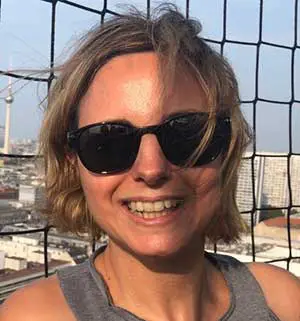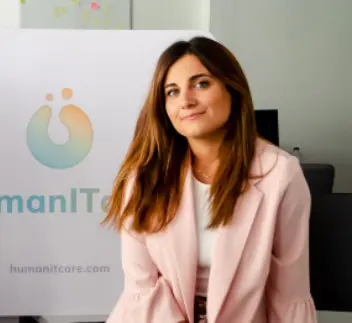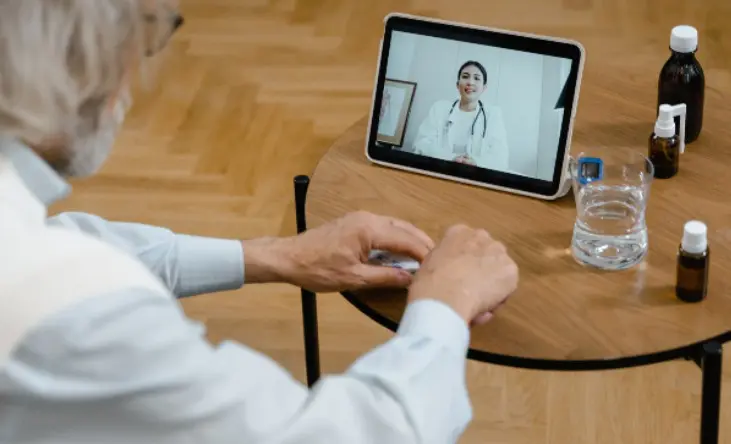Nuria Pastor: “Telemedicine is making it possible to transition from reactive to preventive healthcare”

Marta Villalba
 In Spain, the digital health services platform Savia, launched by MAPFRE, provided more than 150,000 consultations during lockdown and acquired 50,000 new users. It currently has more than 260,000 registered users. Video consultations, medical chats and the symptoms assessor were the most in-demand services. McKinsey predicts that telemedicine will expand over the years to come, with 75 percent of users reporting a high degree of satisfaction with the service.
In Spain, the digital health services platform Savia, launched by MAPFRE, provided more than 150,000 consultations during lockdown and acquired 50,000 new users. It currently has more than 260,000 registered users. Video consultations, medical chats and the symptoms assessor were the most in-demand services. McKinsey predicts that telemedicine will expand over the years to come, with 75 percent of users reporting a high degree of satisfaction with the service.
In the case of those who tried HumanITcare at Torrevieja Hospital in Alicante, Spain, this percentage rose to 92 percent. Moreover, 100 percent of this user group wanted to continue using it thanks to the peace and security it provided, explained Hernández, CEO as well as co-founder of the platform. The platform provides remote healthcare to chronic patients, through a range of devices (some of which are certified for medical use, and others such as smart watches and wristbands from well-known brands). These devices monitor different health parameters (ECG, blood pressure, sleep quality, blood sugar levels, etc.), depending on the illness in question. Doctors can then monitor this information online and in real time. If any abnormal measurements are recorded, the system sends an alert to the doctor, who will contact the user or make an appointment with them to conduct any tests required.
In addition to this data, the platform also facilitates the gathering of qualitative information, such as symptoms, with smart questionnaires that can be answered through an app on your phone or tablet, or online via your computer. It is also aimed at people with neurodegenerative diseases, both for monitoring by their family members and social workers.
A bridge to prevention
Many health organizations have integrated HumanITcare into pilot projects, such as the Vall d’Hebron hospitals (the European DISCOvERIE project) and Clínic (post-infarct patients) hospitals in Barcelona and La Paz hospital in Madrid (with young transplant patients). The data support the platform’s benefits for patients: It reduced the number of emergency visits by 33 percent, increased treatment adherence and provided patients with greater energy and peace of mind, among other benefits.

Hernández is clear about the advantages: “This service enables patients to have a 24/7 service, which is important because they have the added difficulty of a chronic illness in their lives. It provides peace of mind and quality of life, allowing them to get out more or get back to exercising. For hospitals and health centers, it enables the provision of a service that is truly tailored to the needs of patients, who no longer have to become ill before they receive hospital treatment.”
However, not everyone is able to get to grips with these new technologies. “One of the biggest challenges we have had has been the digital divide.” To overcome this barrier, they have developed several solutions, such as a tablet that is “extremely easy to use, highly suited to older people, with large icons and reminders, super intuitive and even fun.” For anyone with any kind of technological difficulty or disability, they have devised a device that replaces the cellphone app and is operated by simply pressing a button or talking directly to the Amazon or Google voice assistants. Furthermore, “We have a training program for caregivers, family members and doctors.”
Telemedicine: a sector with great potential
The pandemic has propelled telemedicine to the fore, but much remains to be done. “A plan is being developed in Spain and the trend in Europe indicates that by 2025 this will be implemented. And for a reasons that is very evident: The public health system is fairly inefficient due to the amount of resources it consumes. I am convinced that a large number of processes will have to be digitized in order to optimize costs.” Hernández foresees a slow but steady evolution, “because there is already a digital mindset among those who will be ‘seniors’ within ten years, and thanks to the ease of use.”
